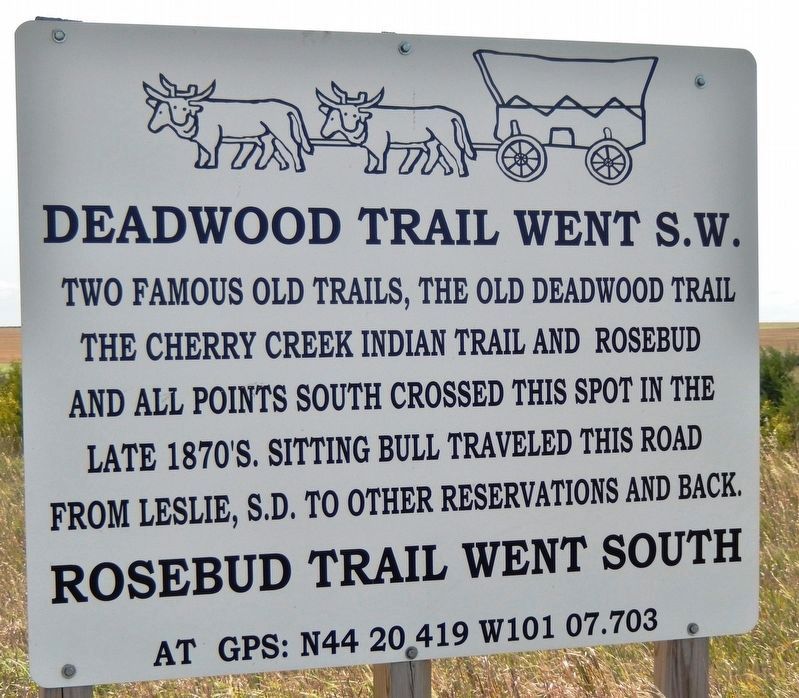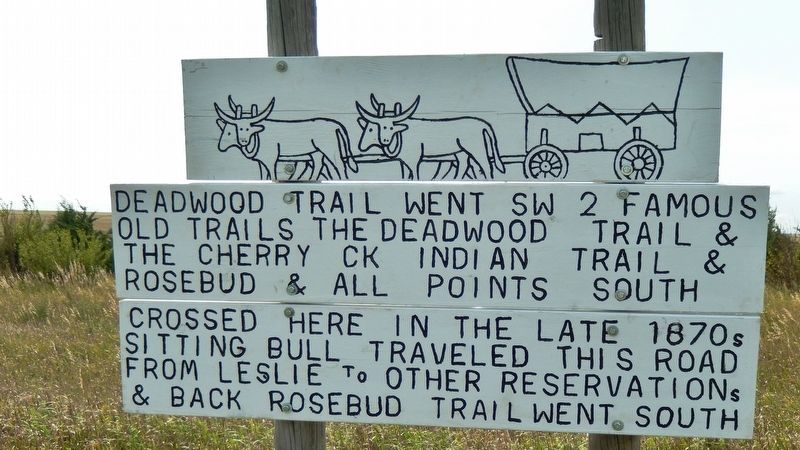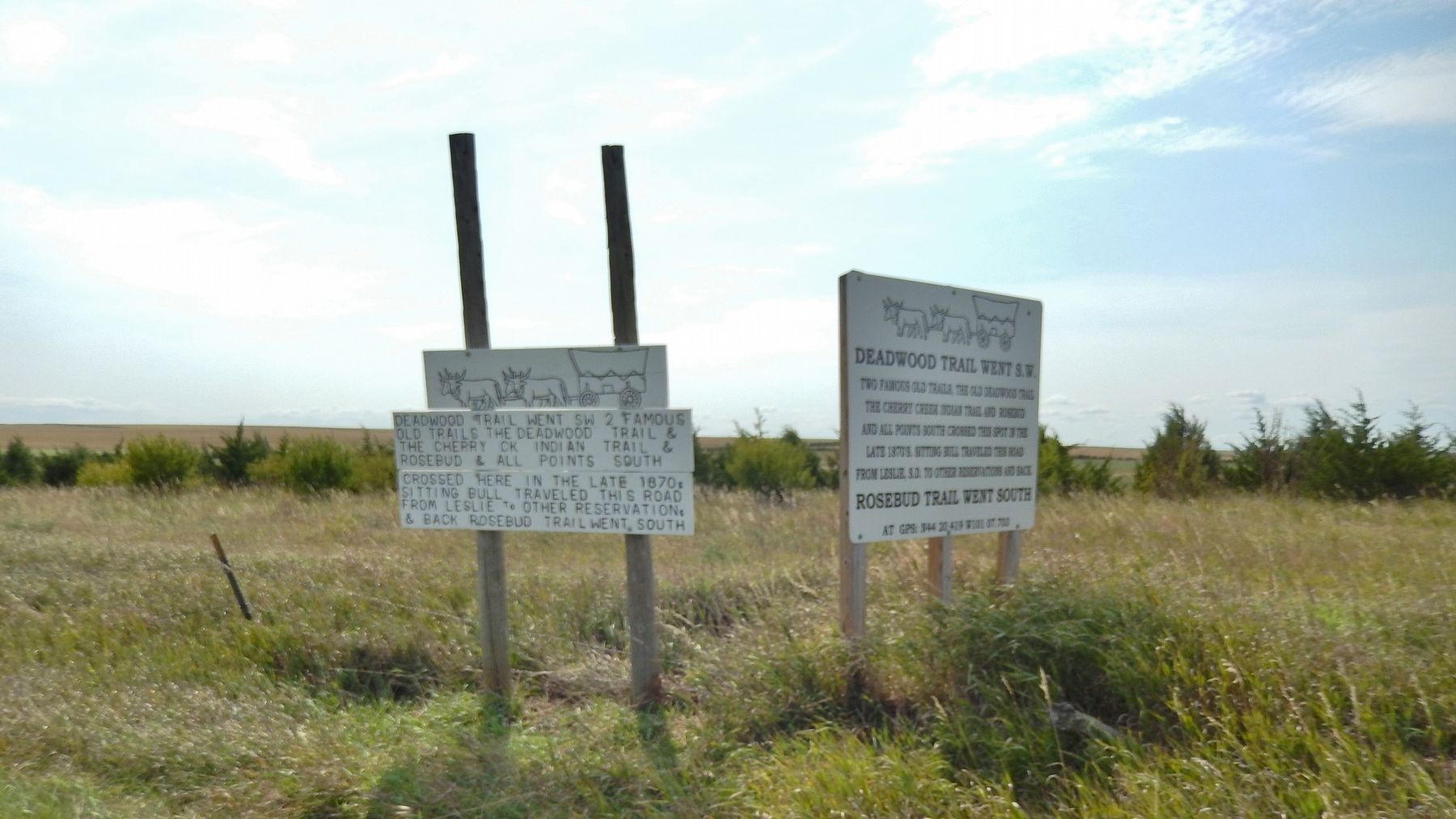Hayes in Stanley County, South Dakota — The American Midwest (Upper Plains)
Deadwood Trail Went S.W.
Inscription.
Two famous old trails, the Old Deadwood Trail and the Cherry Creek Indian Trail and Rosebud and all points south crossed this spot in the late 1870ís. Sitting Bull traveled this road from Leslie, S.D. to other reservations and back.
Rosebud Trail went south
Topics. This historical marker is listed in these topic lists: Native Americans • Roads & Vehicles.
Location. 44° 20.418′ N, 101° 7.704′ W. Marker is in Hayes, South Dakota, in Stanley County. Marker is on South Dakota Highway 63 (U.S. 14) 2.1 miles south of 34, on the right when traveling south. Marker is located on the west side of the highway. Touch for map. Marker is at or near this postal address: 21039 US Highway 14, Hayes SD 57537, United States of America. Touch for directions.
Other nearby markers. At least 2 other markers are within 8 miles of this marker, measured as the crow flies. Plum Creek Waterhole (about 300 feet away, measured in a direct line); Early Western Highway (approx. 7.8 miles away).
More about this marker. There are two duplicate markers at this location; an older, wooden one facing east, and a newer, metal one facing north.
Also see . . .
1. The Old Deadwood Trail. One of the famous trails is the Fort Pierre to Deadwood Trail which begins at the end of Hustan Ave in Fort Pierre near the southwest end of the present Colonel Waldron Missouri River Bridge. Following the discovery of gold in Deadwood in 1875, hordes of prospectors, gamblers and storekeepers headed for the Black Hills which was in the heart of the Great Sioux Reservation. The fact that they were trespassing on Indian land didnít stop them and they kept coming from all directions. (Submitted on October 3, 2018, by Cosmos Mariner of Cape Canaveral, Florida.)
2. Cherry Creek Indian Trail. Cherry Creek Indian Trail to Pierre Indian School was used by many Indians from early 1890 into 1920ís. Long strings of wagons were often seen during spring and fall coming to and from the Indian School. (Submitted on October 3, 2018, by Cosmos Mariner of Cape Canaveral, Florida.)
3. Rosebud Sioux Tribe. Located in south-central South Dakota, the Rosebud Indian Reservation borders the Pine Ridge Reservation on its northwestern corner and the state of Nebraska to its south. The Rosebud Sioux Tribe, more properly known as Sicangu Lakota Oyate, or Burnt Thigh People, are descendants of the Sicangu Oyate of the Tetonwan Division of the Oceti Sakowin or Seven Council Fires. Historically, they were warriors and hunters and expert horsemen. (Submitted on October 3, 2018, by Cosmos Mariner of Cape Canaveral, Florida.)
Credits. This page was last revised on October 5, 2018. It was originally submitted on October 1, 2018, by Cosmos Mariner of Cape Canaveral, Florida. This page has been viewed 232 times since then and 38 times this year. Photos: 1, 2, 3. submitted on October 3, 2018, by Cosmos Mariner of Cape Canaveral, Florida. • Bill Pfingsten was the editor who published this page.


